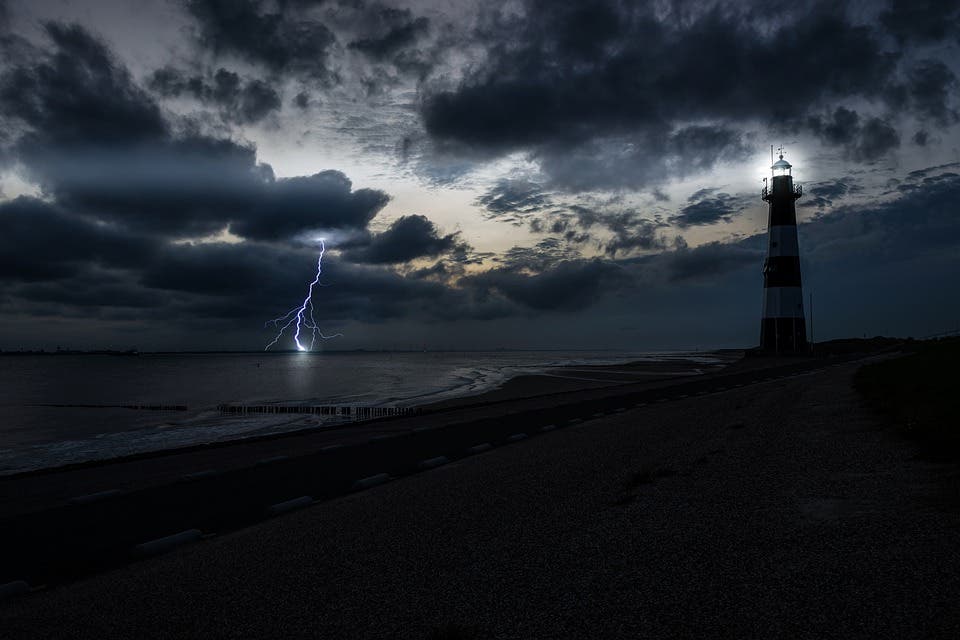According to a newly-published global survey of lightning “superbolts”, the Southeastern U.S should expect to see massive lightning discharges starting November.

A new study from the University of Washington study maps the location and timing of “superbolts”: bolts of lightning that release more than 1 million Joules’ worth of electricity — roughly a thousand times more than the average lightning bolt. According to the results, while the lightning season in the Southeastern U.S is almost finished, the peak season for these massive strikes won’t begin until November.
Lightning, boltyer.
“It’s very unexpected and unusual where and when the very big strokes occur,” said lead author Robert Holzworth, a UW professor of Earth and space sciences who has been tracking lightning for almost two decades
Holzworth manages the World Wide Lightning Location Network, a UW-managed research body that operates about 100 lightning detection stations around the world. By using readings from three (or more) stations at a time, the network allows researchers to determine a bolt’s size and location. The World Wide Lightning Location Network has been in operation since the early 2000s.
For the new study, the team analyzed 2 billion lightning strikes recorded between 2010 and 2018. Out of these, some 8,000 events were confirmed superbolts. That’s around one in 250,000 strokes, or four-millionths of a percent, making these superbolts quite rare.
The findings paper show that superbolts are most common in the Mediterranean Sea, the northeast Atlantic and over the Andes, with lesser hotspots east of Japan, in the tropical oceans and off the tip of South Africa.
While regular lightning strikes occur most often over land (roughly 90% of all strikes), superbolts tend to strike over water. The Southeastern U.S. sees the most lightning strikes per year in the USA, and the islands of Southeast Asia also see many strikes. The team also adds that average stroke energy over water is greater than the average stroke energy over land.
“Superbolts happen mostly over the water going right up to the coast,” Holzworth said. “In fact, in the northeast Atlantic Ocean you can see Spain and England’s coasts nicely outlined in the maps of superbolt distribution.”
“Until the last couple of years, we didn’t have enough data to do this kind of study,”
The timing of superbolts also doesn’t follow the rules for typical lightning. The latter mostly occurs in the Americas, sub-Saharan Africa and Southeast Asia during summer thunderstorms. In contrast, superbolts are more common in the Northern Hemisphere and strike both hemispheres between the months of November and February. The team doesn’t yet know why the two classes of lightning have different distributions.
The number of recorded superbolts also varies year by year. The late 2013 was an all-time high, Holzworth says, with late 2014 being the next highest. Other years have far fewer recorded events.
“We think it could be related to sunspots or cosmic rays, but we’re leaving that as stimulation for future research,” Holzworth said. “For now, we are showing that this previously unknown pattern exists.”
The paper “Global Distribution of Superbolts” has been published in the Journal of Geophysical Research: Atmospheres.









